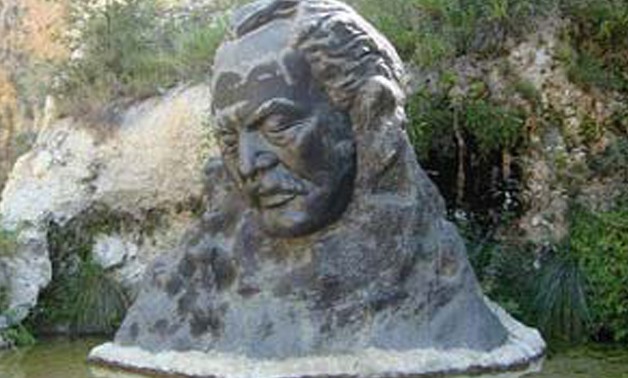
Statue of Gibran’s head, by Yomna El-Saeed
CAIRO - 14 May 2017: Although Lebanon is famous for its outstanding nature, the nerd inside me placed Gibran Khalil Gibran’s museum on top of my to-visit list during my trip to Lebanon in 2013, even before the sight-seing tours.
It was my dream to visit the museum that encloses the personal possessions and the artworks of the famous philosopher, artist and poet whose writings I love so much. Luckily enough, it turned to be a sight-seeing visit and a cultural one.
At 7:30 a.m. the bus took off heading to the north. Listening to the beautiful songs of Fairuz whilst sitting by the window seat, I enjoyed the breath-taking scenery of the woods as we ascended the mountain. My alto-phobia caused much awe and adrenaline to my pleasure. The tour guide told us that she would stop talking to leave us to enjoy the scenery.
The museum is 120 km from Beirut, at an altitude of around 1,500 meters (4,900 ft) above the Mediterranean level. It lies in the Kadisha Valley in the north of Lebanon, in the Bsharri district. Bsharri is renowned for having a natural reserve of the only preserved original Cedars in Lebanon.
Gibran museum is a grotto in a mountain surrounded from all sides by various types of trees and flowers. It is one of very few museums around the world that is carved inside a mountain. It is located a few blocks away from where the prominent poet was born.
Getting close to Khalil Gibran
Few meters away from the museum’s entrance, there is a large statue of Gibran’s head. It was the last thing one is allowed to photograph, as photography is prohibited inside the museum.
A couple of steps inside the museum, there is a small-sized water spring in the stonewall with a banner above it which says “The Prophet’s Spring”. It was named after Gibran’s most famous book of prose poetry, the Prophet. I drank a cup of water and got deeper into the Gibran mood.
The museum is relatively small. It contains 16 rooms that are all numbered in Roman numerals written on Cedar wood.
The museum displays 160 out of Gibran’s 420 original paintings, all of which are full of symbolism. Most of them are paintings of nude figures in mystical cohesion. He also painted some of the people who influenced him, like Tagore, Mary Elizabeth Haskell, May Ziade, his mother, as well as his sister.His personal library is also displayed.
Downstairs there is a small dark room that has his own bedroom, and his grave. A life-sized silhouette of Gibran was reflected by a small bulb on the wall opposite to the bed. He turned out to be a short skinny man!
Near the exit door there is a small corner selling Gibran’s books translated into many languages at significantly high prices, as well as other souvenirs.
Despite my happiness for seeing the priceless artifacts inside the museum, my favorite part of this visit was the breath-taking scenery outside of it.
Comments
Leave a Comment